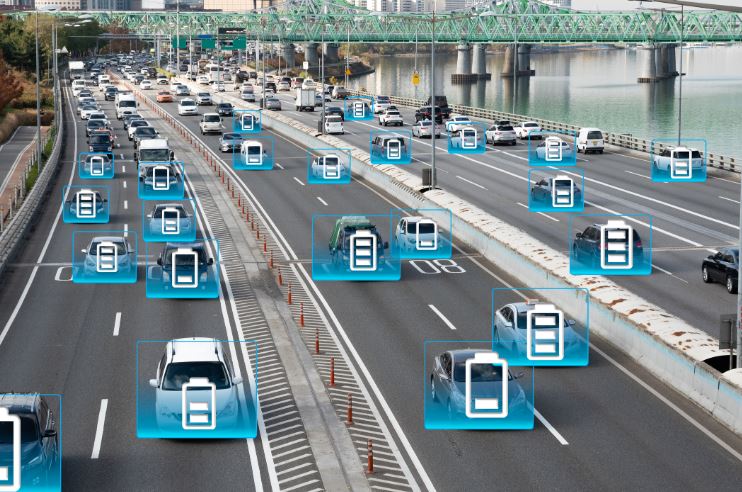From Range Anxiety to Resale Concerns: Decoding the Challenges in EV Adoption
The global push for sustainability and the reduction of greenhouse gas emissions has driven the rapid growth of the electric vehicle (EV) industry. Electric vehicles offer a promising solution to the environmental challenges posed by traditional internal combustion engine (ICE) vehicles. With their zero-emission nature and potential to reduce our dependence on fossil fuels, EVs have captured the imagination of consumers and policymakers alike. However, the road to widespread EV adoption is not without its hurdles. In this comprehensive exploration, we delve into the challenges that hinder the seamless transition to electric vehicles and explore potential solutions that can pave the way for a sustainable and electrified future.
Limited Charging Infrastructure: The Achilles’ Heel of EVs
One of the most significant barriers standing in the way of mass EV adoption is the limited charging infrastructure. While electric vehicles offer numerous benefits, the convenience of refueling at traditional gas stations is a crucial aspect of ICE vehicles that EVs struggle to replicate. The scarcity of charging stations in residential areas, workplaces, and public spaces often leads to a phenomenon known as “range anxiety” among potential EV buyers – the fear of running out of battery power before reaching a charging point. This concern can significantly impact consumer confidence in making the switch to EVs.
Solution: To overcome this challenge, it is imperative that governments, private companies, and energy providers collaborate to accelerate the expansion of charging networks. Investments in fast-charging stations along highways, at shopping centers, and in densely populated areas can alleviate range anxiety and make EV ownership more appealing. Additionally, the integration of EV charging infrastructure into urban planning and building codes can ensure that convenient charging options are available to all.
Upfront Costs and Affordability Challenges:
While the potential for long-term cost savings due to lower operational and maintenance expenses is often touted, the initial purchase price of electric vehicles remains relatively high compared to their gasoline counterparts. The high upfront cost can be attributed, in part, to battery technology, a key component of EVs, which contributes significantly to the overall cost. This high initial cost often dissuades budget-conscious consumers from making the switch to electric vehicles, despite the potential for savings over the vehicle’s lifetime.
Solution: To address the affordability challenge, governments can play a crucial role by implementing incentives, tax breaks, and rebates to offset the higher initial costs of EVs. Financial incentives can effectively bridge the gap between the cost of electric and gasoline vehicles, encouraging more consumers to consider EVs as viable options. Moreover, as battery technology continues to advance and economies of scale are realized in manufacturing, the cost of EVs is expected to decrease, making them more accessible to a broader range of consumers.
Limited Driving Range:
The driving range of electric vehicles has improved significantly in recent years, yet it still falls short of the range provided by most gasoline-powered vehicles. While the driving range is more than sufficient for daily commutes and short trips, some potential EV buyers remain concerned that they won’t be able to undertake longer journeys without the need for frequent charging stops. This apprehension can hinder the broader adoption of electric vehicles, particularly among those who frequently engage in long-distance travel.
Solution: Addressing the challenge of limited driving range requires ongoing research and development in battery technology. Advances in battery chemistry and engineering are likely to result in increased energy density, ultimately extending the driving range of EVs. Moreover, effective public education campaigns can play a significant role in dispelling misconceptions about limited range. By providing accurate information and emphasizing the practicality of electric vehicles for most everyday driving needs, consumers can gain a better understanding of the capabilities of modern EVs.
Charging Time and Convenience:
While EV charging technology has come a long way, the time required to fully charge an electric vehicle remains a concern. The time needed for a full charge is still considerably longer than the time it takes to refuel a conventional gasoline vehicle. While home charging is convenient for many, it can take several hours to reach a full charge, making it less suitable for those who require rapid refueling.
Solution: The development of faster charging technology is a critical aspect of overcoming this challenge. Advancements in fast-charging technology can significantly reduce charging times, making EV charging more comparable to refueling with gasoline. The availability of high-speed charging stations along major travel routes can make long-distance travel in EVs more feasible, alleviating concerns about lengthy charging stops during road trips.
Resale Value and Uncertainty:
As EV technology continues to evolve at a rapid pace, potential buyers may hesitate due to concerns about the resale value of their vehicles in the future. The fear that their EVs will become quickly outdated as newer models with improved battery technology enter the market can discourage adoption.
Solution: Automakers can take steps to address the uncertainty surrounding the resale value of EVs. Offering buyback programs or guarantees on battery life can provide consumers with greater confidence in the long-term value of their EVs. Clear communication about planned battery upgrades and improvements can also help mitigate uncertainties and assure buyers that their EVs will remain relevant and valuable over time.
Lack of Consumer Awareness and Education:
A lack of awareness and accurate information about electric vehicles is another significant obstacle to adoption. Consumers might not fully understand the benefits of EVs, how they work, and how to integrate them into their lifestyles. Misconceptions about EVs, ranging from their affordability to their performance capabilities, can further hinder adoption rates.
Solution: Addressing this challenge requires a multi-faceted approach that involves governments, environmental organizations, and automakers. Comprehensive education campaigns can raise awareness about the numerous advantages of EVs, dispel myths, and inform consumers about incentives, cost savings, and environmental impacts. By providing accurate and easily accessible information, potential EV buyers can make more informed decisions based on a solid understanding of the technology and its benefits.
Conclusion:
The challenges hindering the widespread adoption of electric vehicles are complex and multifaceted, but they are not insurmountable. Through collaborative efforts among governments, private industry, and consumers, many of these challenges can be addressed and overcome. The transition to electric vehicles represents a critical step toward a more sustainable and environmentally friendly transportation future. As technology continues to improve and society becomes more attuned to the benefits of EVs, we can expect to see significant progress in overcoming these challenges and accelerating the electrification of the global automotive fleet. By focusing on expanding charging infrastructure, improving affordability, addressing range limitations, and promoting education, we can pave the way for a future where electric vehicles play a central role in reducing our carbon footprint and shaping a cleaner and greener world.

